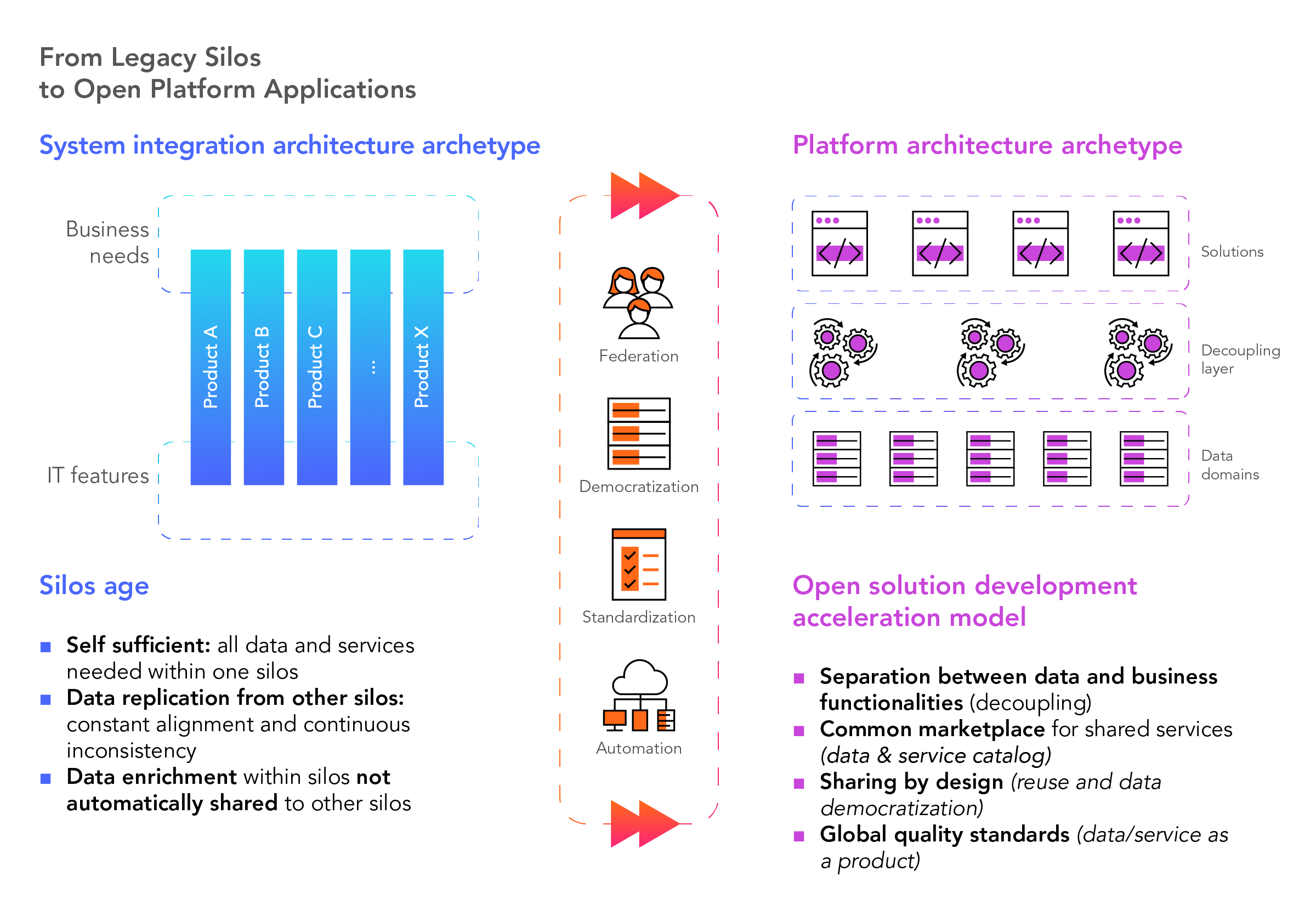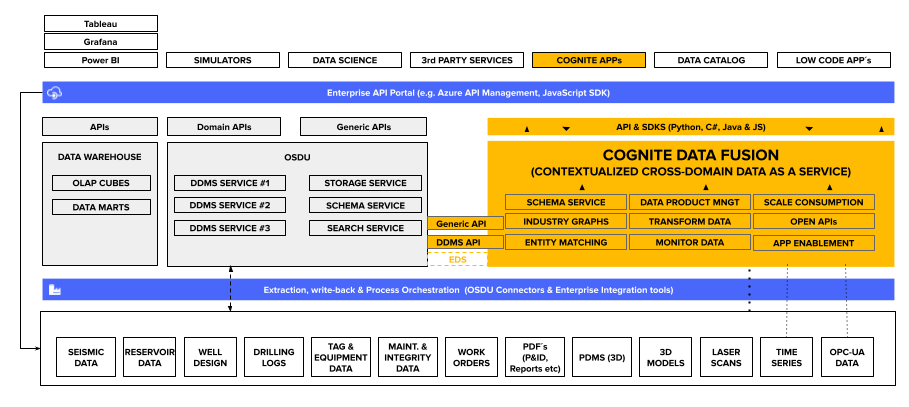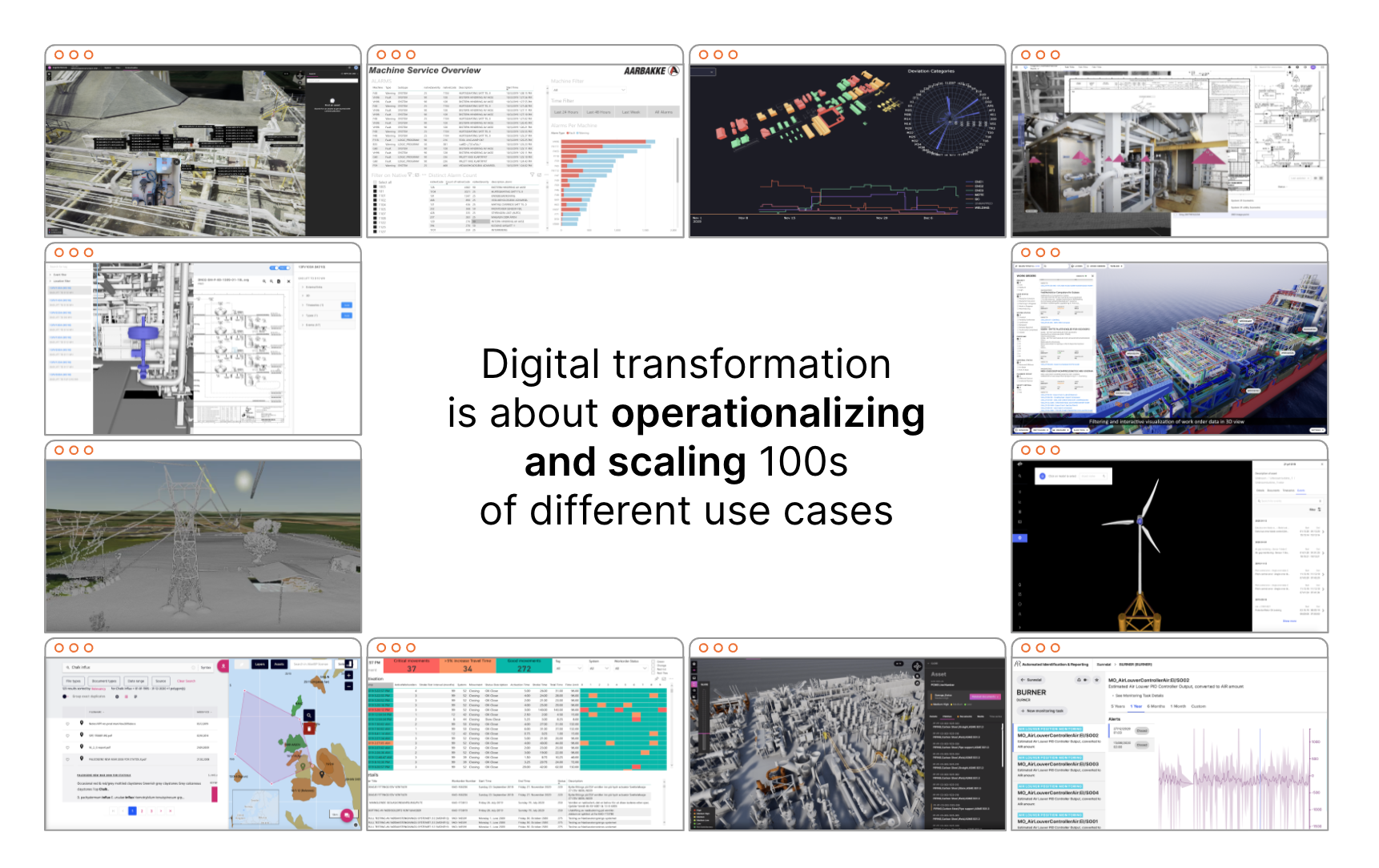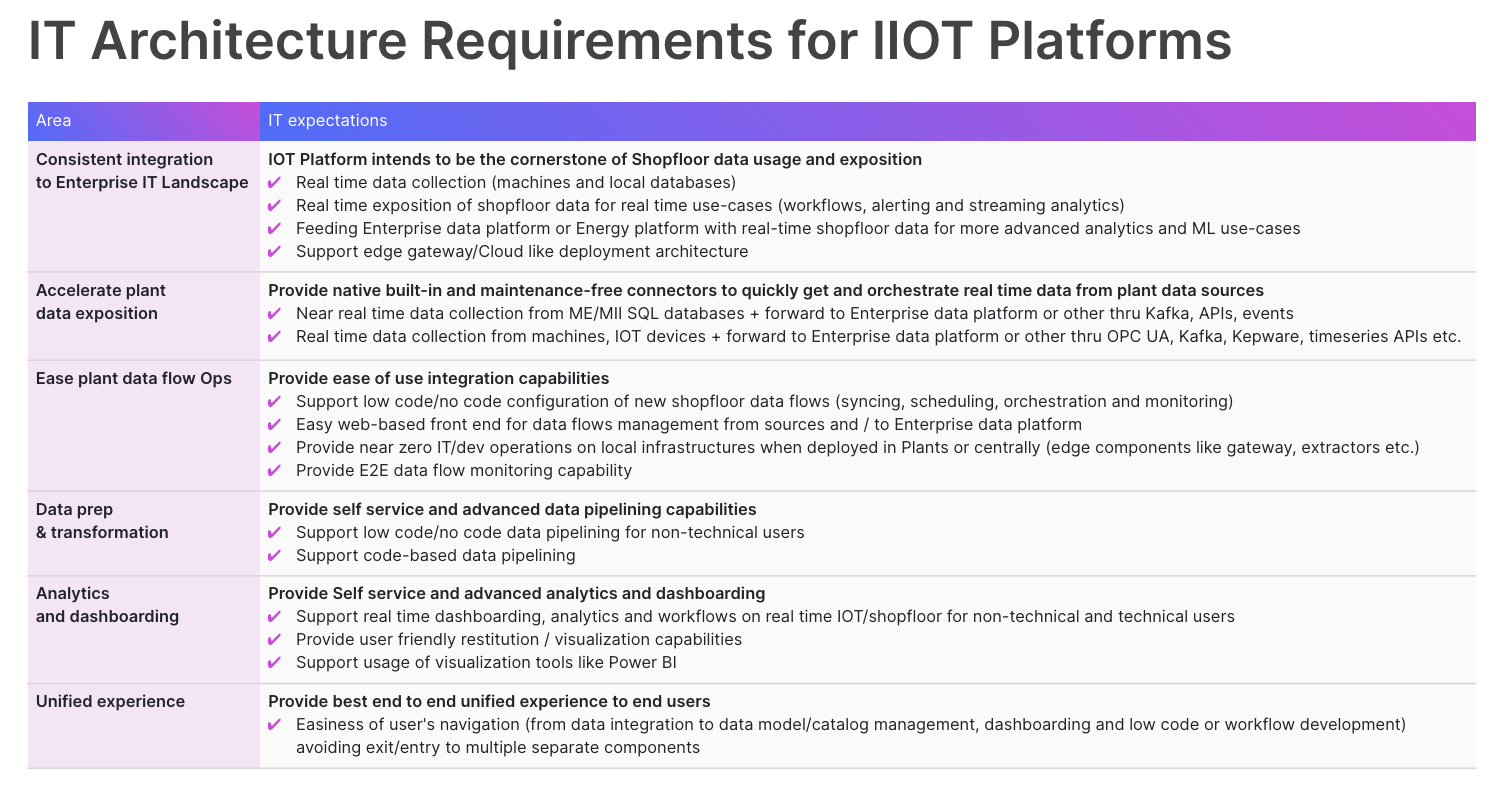Only a fool believes in different outcomes by doing the same as before.
Executive summary:
- The modern data stack - a more nuanced view of data platforms - is quickly gaining ground, focusing on making data truly useful, not just storing it in the cloud
- Modern data stack based platforms (simply referred to as 'platforms' from hereon) are the only means of moving beyond costly, monolithic, closed business applications that maintain business and data silos, preventing real digital transformation
- Platforms themselves are equally no longer monolithic products, but equally composed of interoperable platforms services from multiple open platforms
- Open platforms with composable business applications are the new technology imperative. Old technology stacks, and “lets only focus on the discrete business solution at hand” approaches don’t work for the 2020s enterprise
- OT, IT, and business must work together to prevent tug of wars - and instead - collaborate to secure competitiveness in the new platforms era
“Digital acceleration is just a dream without a new approach to tech”
It is how leading strategy advisory firm BCG concludes on the strategic importance of enterprises understanding the role of technology platform architecture for their business transformation. For progressive CIOs, CTOs, CDOs, and other technology-for-business executives, understanding the role of platforms in moving beyond costly, monolithic, inflexible, and closed business applications is not new; yet examining what this really means for both the customers as well as suppliers can help address internal disagreements and common sources of conflict.
Below illustration provides a summary of the old ‘silos era’ model and the new open ‘platform architecture’ model many enterprises find themselves transitioning towards - at times with considerable gravity pulling them back into the old model (even whilst all in principle agree to the superiority of the new open platform architecture model.)
One common source of conflict lies with failure to differentiate and balance between tactical and strategic dimensions, i.e.,
“let's only focus on the discreet business solution at hand” vs. “architecting for current and all other subsequent business solutions.”

Figure 1: From legacy silos to open platform applications
Investing in open solution development acceleration platforms vs. buying isolated opaquely packaged business solutions
Case studies on platform architecture native companies such as Amazon are well-documented, and both technology as well as business executives overwhelmingly aspire towards similar innovativeness and plain simple operational execution excellence that a platform architecture clearly makes possible.
At the same time, still predominantly siloed business executives continue to put short-term solution delivery goals ahead of open, configurable, extendable - and enterprise level clearly more cost efficient - platform goals. And to be honest, looking at the many 5-year Dream Digital Platform projects falling short on delivering any tangible value to business within the first project year(s), who can blame them? The fallback option however cannot be to keep purchasing costly, monolithic, siloed business solutions whilst pretending such decisions result in anything other than continuation of status quo.
Only a fool believes in different outcomes by doing the same as before.
A strong sign of industrial customers voting with their wallets to break free from 'siloed monolithic business solution tyranny” can be seen in the momentum of The OSDU Forum. Firmly rooted in O&G operators' collective need to re-architect their entire subsurface technology landscape, The OSDU is a testament to the transformative value of moving from the old ‘silos era’ model to the new open ‘platform architecture’ model. (For full disclosure, Cognite has been an active OSDU member since 2019.)
Open solution development acceleration platforms - with composable business applications - are the new technology imperative
Old 'silos era' isolated product purchasing focussing only on delivering to the discreet business solution at hand does not work for the 2020s enterprise. OT, IT, and business executives must join forces to secure competitiveness in the new platforms era by striking a balance between short-term value delivery and strategic digital acceleration platform capability development. The good news is that leading modern industrial platform technology providers offer increasingly mature composable reference applications as a way to help customers achieve fast return on investment in a predictable, rapid, and maintainable way - whilst simultaneously accelerating critical open platform architectures at the same time.
.png)
Figure 2: Composable reference industrial applications using low code
By placing openness and composability at the centre of both business application and enterprise platforming decisions, it is possible to have your cake and eat it too. Resulting in natural digital maturity progression summarized well by ARC Advisory Group:
'If the application — or focused set of use cases — is the understandable starting point, platforms are the next logical step. As customers experience clear measurable ROI from initial use cases, progressive users show a strong preference for extending application value and building their own as they become more digitally comfortable'
Who wouldn't love supercharging their open platform architecture capabilities and delivering new data-rich solutions to business in less than 3 months at the same time.

Composing your own platform with interoperable platforms services from multiple open platforms
There isn’t necessarily one data and analytics platform - or middleware - product or vendor partner that fulfills your diverse business needs. In fact, Gartner has for some time voiced that an off-the-shelf data and digital platform is a pipe dream for enterprise level oil & gas and other asset-heavy companies. There simply is no shortcut to obtaining a resilient and adaptive data and digital platform that truly meets the diverse and evolving needs of complex industrial enterprises going through substantial internal and external change.
Digital transformation leaders across industries are choosing Cognite Data Fusion® for its open architecture, specialization in OT/IT/ET/visual data contextualization, unstructured data handling, and industrial equipment and process data templatization capabilities - all available as composable services to deliver on highly efficient and optimized industrial data fabric designs.
A frequent form of composable platform architecture design we see across our customers is one wherein Cognite Data Fusion®'s unique AI-powered data contextualization services (see below illustration) are used to accelerate time to value of enterprise digital twin platforms.
.png)
Figure 3: Accelerate time to value of enterprise digital twin platforms
Similarly, Cognite Data Fusion® is used to accelerate time to value on OSDU Data Platforms, whilst in parallel delivering high-value composable application solutions to business (please find Cognite Data Fusion® for OSDU reference architecture below in Illustration 4)
We're also excited to share with you how BP is using Cognite's Open Industrial Data Operations platform Cognite Data Fusion® to empower its engineers and domain experts with better access to contextualized data in order to increase efficiency and sustainability of well operations.
In a similar agility, openness, and composability focused customer data platform architecture, our Industrial DataOps technology Cognite Data Fusion® is embedded 'as a module in Equinor's OMNIA data architecture'.

Figure 4: Cognite Data Fusion® for OSDU reference architecture
Implications on technology providers - and how you as a customer can ensure you are moving forwards, not staying entrenched
In the industrial software market, most Account Executives have been trained on value selling to business buyers. This translates into the goal of justifying solution pricing based on the monetary value of the business problem the solutions solve; with solution often meaning an opaque combination of vertical business solution software with extensive professional services all around it. When the customer wants to address another business problem, the same value selling methodology starts again.
Whilst such value selling/value buying model is entirely justified and reasonable on both parties in terms of value exchange, it is inadequate, slow, and prohibitively costly for the 2020s digital-first enterprise needing to develop, operationalize, and scale 100s of different solutions to business in an agile and cost-efficient way (see Illustration 5 below).

Figure 5: Digital-first enterprise needing to develop, operationalize, and scale 100s of different solutions to business in an agile and cost-efficient way
Progressive new open ‘platform architecture’ model digital executives have already taken note of what is in their best interest, and are aligning their strategic technology purchases with their enterprise transformation strategy, as exemplified by below industrial innovator example.

Figure 6: IT architecture requirements for IIOT platforms
With true composable software platforms, the vendor's commercial objective is to sell an open, self-service, cost transparent, and extendable workbench tool. “A hammer” as some call it. It is then up to the customer and her professional services partners to build scalable value on top of the platform, with only marginal (and easy to forecast) increase to platform feels as new high-value business solutions are developed and scaled across assets.
-png.png)
Figure 7: Commercial transformation and impact on pricing models
For equally old ‘silos era’ model entrenched Account Executives, a true platform sell can feel like they are leaving significant revenue on the table by giving the customer unfairly scalable business value. Customer value which the seller is unable to monetize based on the future use case's cumulative business impact.
For strategic technology and business executives pursuing the new open ‘platform architecture’ model, however, this represents both real transformation and real scalable value. Best of all, it comes with a fully open and transparent “commodity technology” pricing. A true no brainer.

